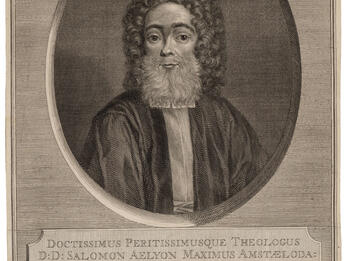Seder ha-mishnah (Order of the Mishnah)
Regarding the other matters, the congregation, may God preserve it, in every single community, according to its size and wealth, will contribute toward the construction of permanent houses of study, for teachers to sit there without their wives and children, where they will teach pupils on a permanent basis. Once a week they will go home. It will be like in earlier generations, when they used to set up special houses of study in each and every city, to establish teachers there with the boys, and also to provide a place for the children of the poor. For this reason, the studies of the children of the rich will be successful and go well, and the teacher will not have to watch the clock. He could even take as many as a hundred boys in this manner, provided that all of them are equal. Furthermore, a householder will place his son for two or three years with the same teacher until he has learned his fill. The teacher [in the school] will not have to flatter the householder, and all the more so the boy, as he will simply teach in truth and faith and for the sake of Heaven. Then he will succeed and grow wise, because the teacher will face no obstacles at all.
Regarding the teacher’s salary, in every single congregation this shall be determined as the leaders of the congregation, may God preserve them, see fit, all in accordance with the time and the needs of the hour. In any event, the householder will be required to pay a third of the salary before the term, or month by month, so that the teacher will not have to worry about his livelihood, as written in the responsa of Rashba [Solomon Ibn Adret (Spain, 1235–1310)] on the law of cantors and teachers.
Now I will write about the order of the teacher’s instruction; how he should behave with the pupils. The teacher must study with the students in a relaxed manner, word by word, treating each child in accordance with his ability and intellect. He must show them a kindly face, and should not be strict with them or grow angry at their ignorance and the limits of their understanding and intellect, as not all minds are equal. Even if it appears to him that they ought to have understood after two or three times, it is possible that their minds did not grasp it due to the difficulty of the subject matter or because of their lack of comprehension at that time, since not all hours are the same. Rather, he should speak with them softly, initially through words of encouragement and consolation, until he knows for certain that the difficulty comes from lack of effort, and that it is because they are not paying attention to the matter and are distracted by other matters. In that case, it is certainly proper to be angry at them if they are small and to strike each of them according to his capacity. If they are big children, he may castigate them and embarrass them and shame them verbally until they focus properly on the topic.
If they ask him about some difficulty, he should explain it with a friendly expression. He should be pleased with their questioning, and he should sharpen their minds so that they ask questions and open their hearts to the Torah. If he prevents them from asking, even if it is about something pointless, on another occasion they will have difficulty with an important issue, and yet they will refrain from asking, and the law or halakhah will be unclear to them, without sufficient justification, and they will merely parrot the answer. On the contrary, if none of them asks a question about some halakhic matter, he should present himself as angry and ask, “Why did this difficulty regarding this halakhah not occur to you?” He should show them the way to formulate a difficulty by themselves on another occasion, because when a person is able to work out a difficulty for himself, he is close to understanding the matter, as the difficulty is half the resolution. In this manner they will improve in their studies and have great success, with God’s help.
Credits
Moses Morawchik, “Seder ha-mishnah (Order of the Mishnah)” (Manuscript, Lublin, 1635). Republished in: Mekorot le-toldot haḥinukh be-yisrael, ed. Simcha Assaf and Shmuel Glick (New York: JTSA, 2002), 534–549.
Published in: The Posen Library of Jewish Culture and Civilization, vol. 5.



